The Ultimate No-Fail Pie Crust: Achieve Perfect Flaky Pastry Every Time
If you’ve ever dreamt of baking a flawless pie but been deterred by past pastry failures, prepare for a delightful surprise! This is the definitive pie crust recipe you’ve been searching for. So simple, so reliable, you absolutely CANNOT fail with this foolproof method – it’s truly invincible.
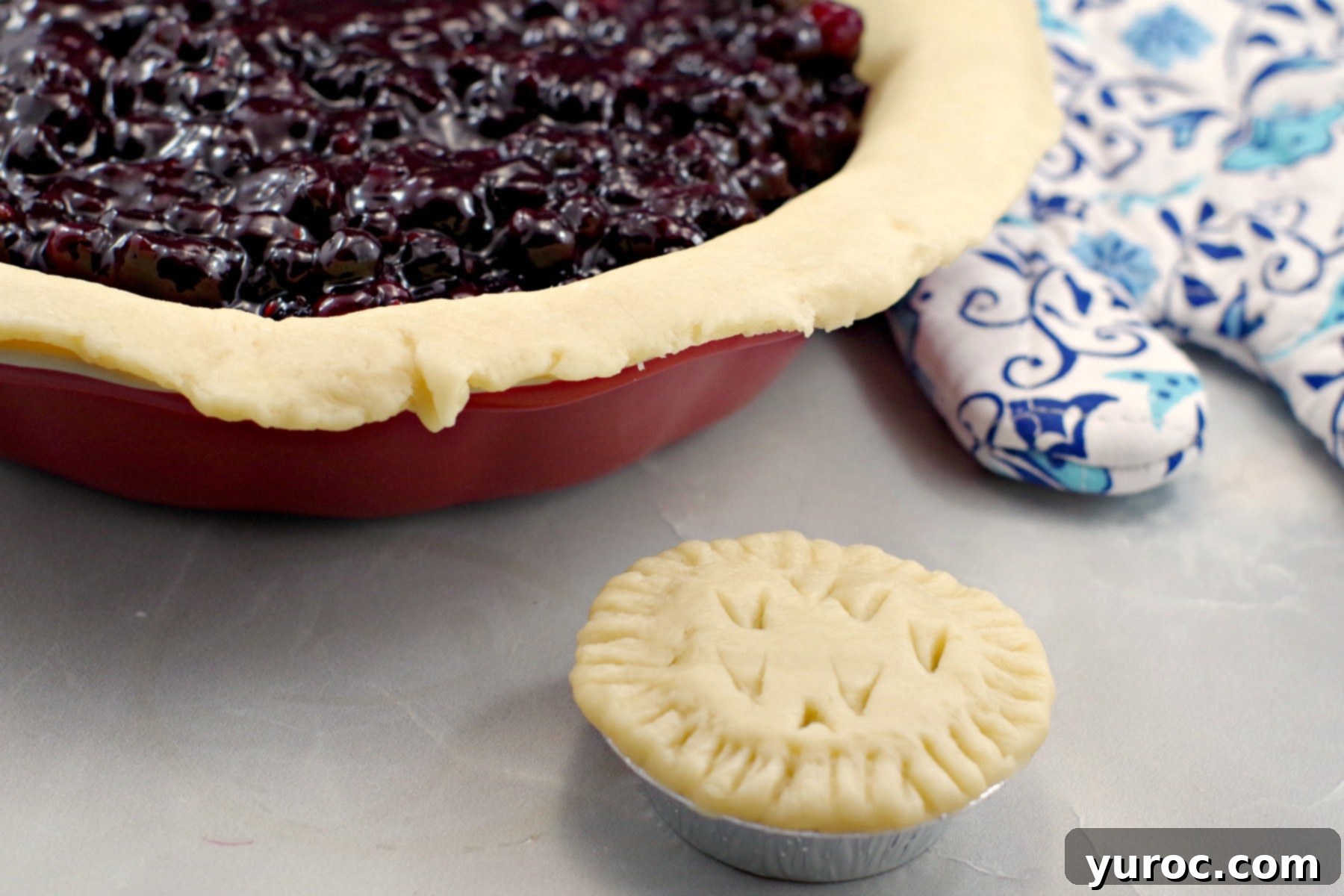
Our No-Fail Pie Crust is a perennial favorite, enjoying particular popularity during festive holiday seasons. This homemade pie crust recipe is remarkably versatile, pairing beautifully with virtually any sweet or savory pie and tart filling imaginable. Whether you prefer classic desserts like tangy lemon pie, rich maple bourbon pecan pie, comforting chocolate pie, creamy coconut cream pie, sweet peach pie, or even a hearty meat pie, this crust provides the perfect foundation. For further inspiration, consider these delightful fillings that pair exceptionally well with this crust: our flavorful Saskatoon Berry Pie Filling & Sauce, the beloved Award-winning Apple Pie Filling, and this convenient Easy Canned Pumpkin Pie Filling.
[feast_advanced_jump_to]
Many years ago, I received a truly special gift from my beloved Grandma. At the time, however, I didn’t fully grasp just how invaluable it would become. It was a simple recipe, meticulously penned in her distinctive handwriting on a crisp white recipe card, nestled within a brand-new pie plate. I thanked her, of course, but didn’t give it much thought, filing it away with other kitchen curiosities.
Yet, the first time I attempted to make pastry on my own and experienced the inevitable disappointment of failure, that little recipe card with the “No Fail Pie Crust” recipe instantly came to mind. It was a lifeline in my budding baking journey, promising success where I had only found frustration.
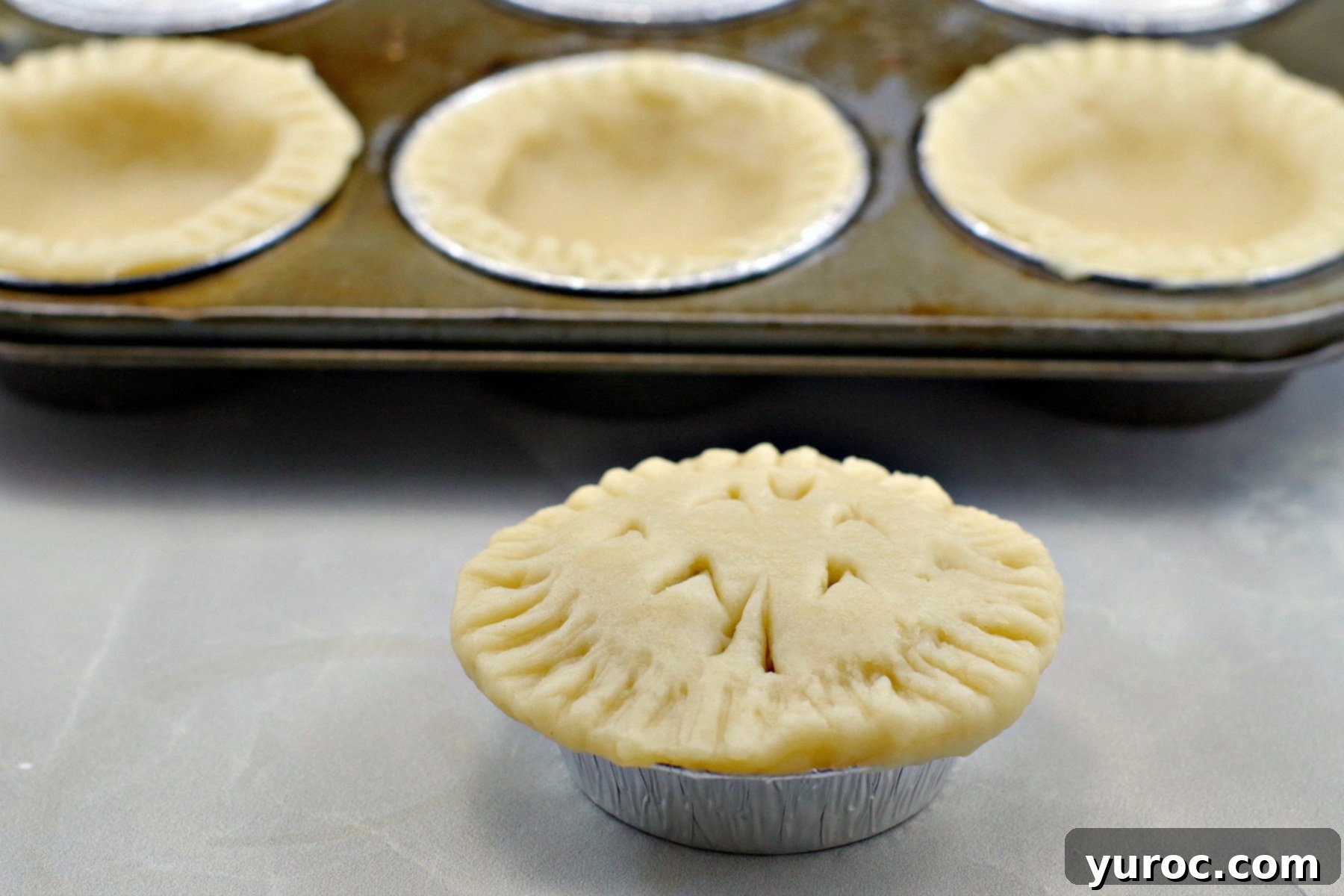
I was absolutely astonished the first time I followed her instructions. Despite being an extremely novice baker, the crust turned out perfectly – tender, flaky, and golden-brown. Since that day, this recipe has become my go-to, my trusted companion in the kitchen. I’ve made it countless times, and it has genuinely NEVER failed! I rely on it for both savory and sweet pies, as well as delicate tarts. It is, without a doubt, the best pie crust you will ever encounter.
The Undeniable SECRET to Flaky Pie Crust Perfection
My Grandma was renowned as a master pie maker in our family, and her secret weapon was this very recipe. What makes this recipe so exceptional is its ability to produce an incredibly tender, melt-in-your-mouth, and consistently flaky crust that simply never fails. The core secret to achieving this foolproof pastry lies in one simple, yet crucial, step: **using very cold water**. This cold water is instrumental in keeping the fat (shortening or lard) solid and distinct within the dough, preventing it from melting prematurely.
If the fat melts and is absorbed into the flour before the dough even reaches the oven, the opportunity for a truly flaky pie crust is irrevocably lost. Instead of creating pockets of steam that lift the layers, the fat disperses, resulting in a tough or crumbly texture. The very cold water acts as a protective barrier, helping the fat maintain its integrity until it hits the hot oven. It’s in the oven that the magic truly happens: the cold fat rapidly melts, releasing steam that pushes apart the layers of flour, creating those desirable, delicate flakes. This interaction consistently yields a beautiful, tender, and incredibly flaky crust every single time.
🥘 Essential Ingredient Notes for Your Perfect Pie Dough
Beyond the crucial element of very cold water, here are the other ingredients you’ll need for this exceptional pie dough, along with explanations of their vital roles:
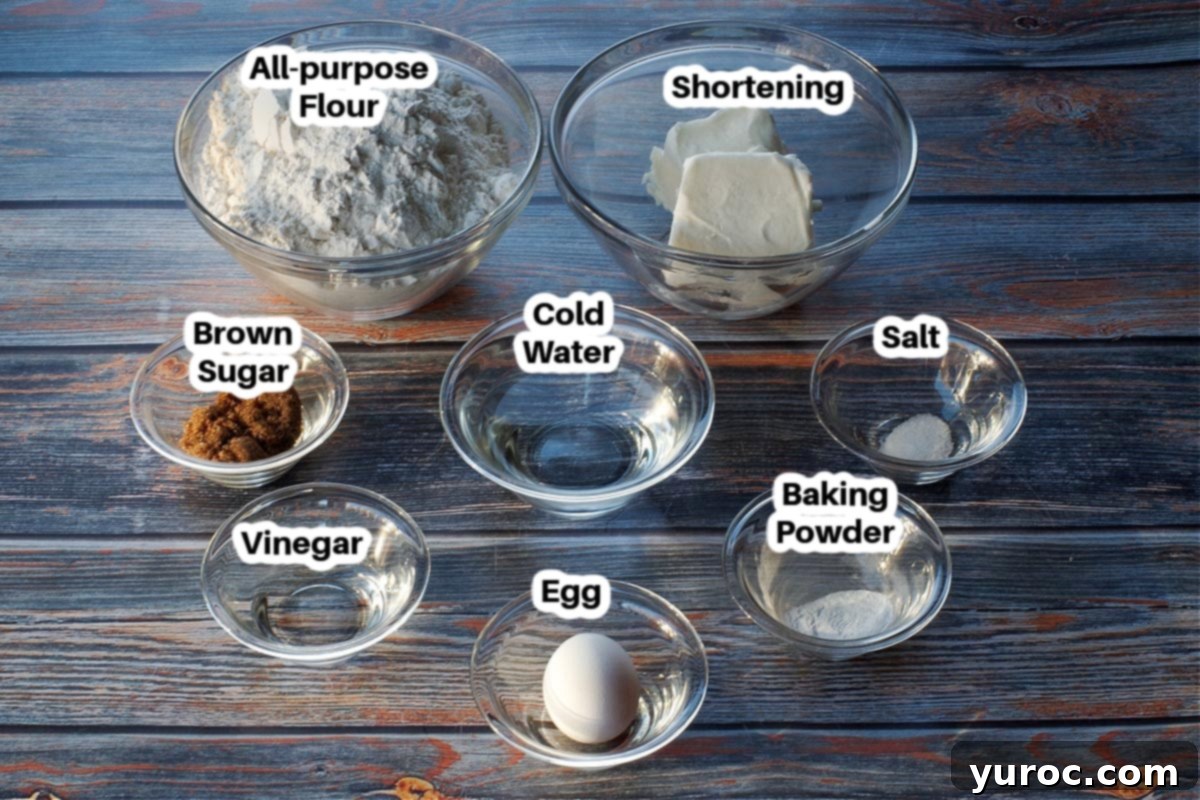
- All-Purpose Flour. This type of flour creates a dough that is remarkably easy to roll out and handle without excessive cracking. Despite its slightly higher protein content compared to pastry flour, the other ingredients in this recipe ensure the crust remains wonderfully flaky and tender. Pastry flour, while seemingly ideal for pastries, can be harder to work with, often cracking when rolled and potentially splitting during baking.
- Baking Powder. Dough naturally tends to shrink during baking. Baking powder cleverly counteracts this by providing a gentle lift and aeration, contributing to a more tender texture and preventing the crust from pulling away from the pie plate.
- Salt. A fundamental flavor enhancer, salt plays a key role in balancing the sweetness of any filling and bringing out the rich, buttery notes of the crust itself. Don’t skip it!
- Brown Sugar. This ingredient adds a subtle, delicate sweetness and a unique depth of flavor that complements both sweet and savory pies. Its molasses content also contributes to a beautiful golden-brown crust.
- Shortening. Shortening is the undeniable powerhouse behind the “invincibility” of this pie crust! Unlike butter, shortening has a significantly higher melting point. This property is crucial because it adds incredible stability to the pie crust as it bakes, creating more distinct layers of fat and flour that result in superior flakiness. Brands like Crisco or Tenderflake are excellent choices, or you can opt for lard for an even richer flavor and texture.
- Vinegar. A surprising but effective ingredient, vinegar aids in making the pie crust exceptionally flakier by tenderizing the dough. It works by inhibiting excessive gluten development, which can lead to a tough crust, ensuring a delicate and crumbly texture.
- Egg. The egg acts as a crucial binder in this recipe, helping to hold all the ingredients together and creating a cohesive dough that is easy to work with. It also adds a touch of richness and contributes to the golden color of the baked crust.
- Cold Water. As highlighted, very cold water is essential. It performs the vital function of keeping the shortening cold and solid, ensuring it doesn’t melt and get absorbed by the flour before the dough enters the oven. This prevents a dense, un-flaky crust. You simply need really cold water directly from your tap; there’s no need for “ice water” as many other recipes might suggest, keeping this process beautifully simple.
📖 Recipe Variations and Substitutions
Given the precise balance of ingredients that contribute to this cold water pastry’s “no-fail” nature, there isn’t much room for extensive substitutions. The key components work synergistically to achieve the perfect texture and flakiness. However, one notable variation you can confidently make is substituting lard for shortening. Lard, being pure rendered pork fat, is often lauded for producing exceptionally flaky and tender pie crusts with a unique, savory depth of flavor. If you choose to use lard, ensure it is also very cold, just like the shortening. Beyond this, we highly recommend sticking to the original recipe to guarantee the foolproof results you expect from this extraordinary crust.
🔪 Step-by-Step Guide: How to Make No-Fail Pie Crust
Follow these straightforward steps to create the perfect foundation for your next pie:
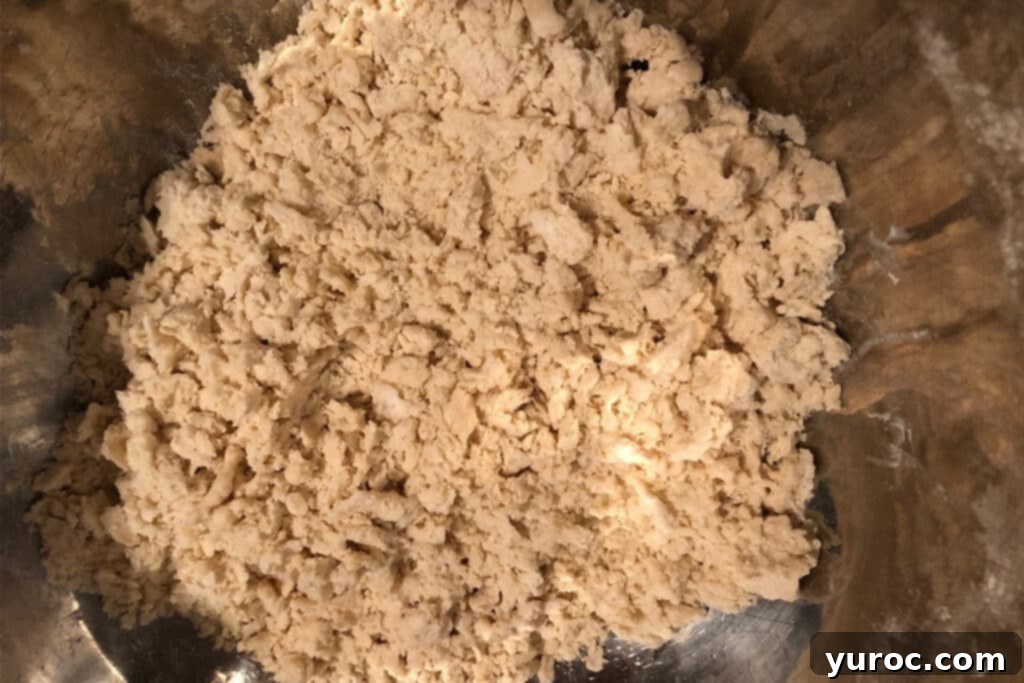
In a spacious large mixing bowl, combine your all-purpose flour, baking powder, salt, and brown sugar. Whisk these dry ingredients together until they are well integrated. Next, add the cold shortening and use a pastry cutter (or your fingertips) to cut it into the flour mixture. Work quickly to avoid warming the shortening, aiming for a mixture that resembles coarse crumbs with some pea-sized pieces of fat still visible. Mix thoroughly but gently.
In a separate, small bowl, gently beat together the vinegar, egg, and very cold water. Once combined, gradually add this wet mixture into the dry flour mixture. Stir carefully until the dough just begins to come together and forms small, cohesive balls. Avoid overmixing at this stage to prevent a tough crust.
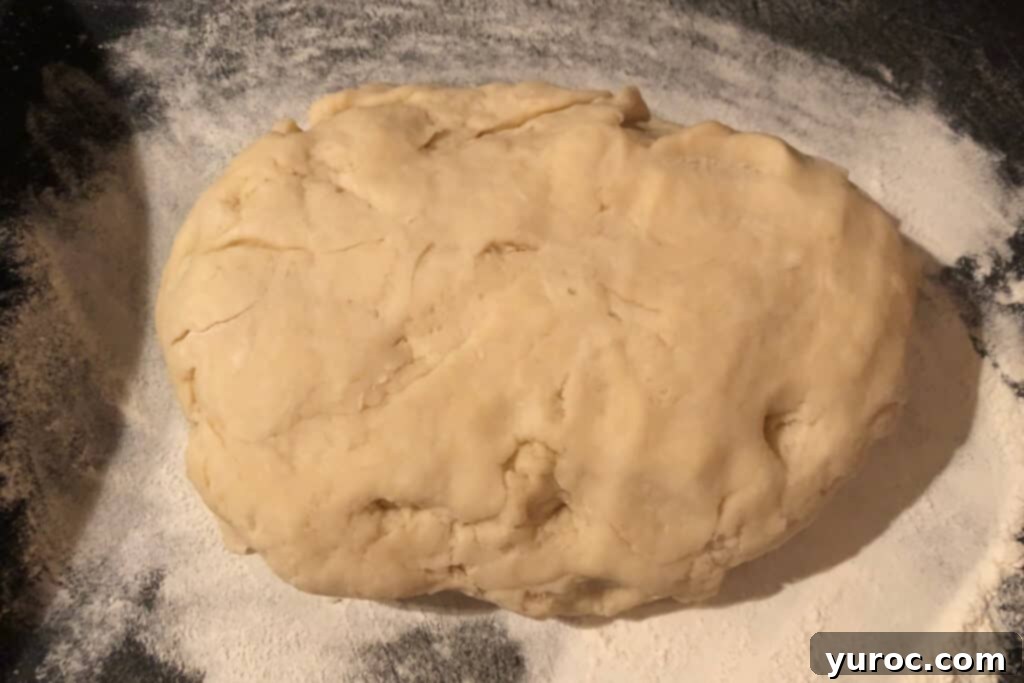
Continue mixing the dough until you can comfortably gather it into a large, unified ball. Don’t be hesitant to use your hands for this step – the warmth from your hands will help bring the dough together, but don’t overwork it. If the dough feels overly gooey or sticky, add a very small amount of flour, about 1 tablespoon at a time, incorporating it until the stickiness subsides. Be cautious not to add too much flour, as an overly dry dough will be difficult to roll out and may crack. The goal is a pliable, slightly tacky dough that holds its shape. Remember, you’ll also have a little extra flour on your work surface, so be mindful not to incorporate too much during rolling.

Lightly flour a clean work surface and your rolling pin. Roll the pie dough out evenly to a thickness of approximately ⅛ to ¼ inch. The dough should be large enough to extend beyond the edges of your pie plate or tart molds. To gauge the correct size, place your pie pan upside down on the rolled-out dough. For tarts, use your aluminum tart plates in the same manner as a guide.
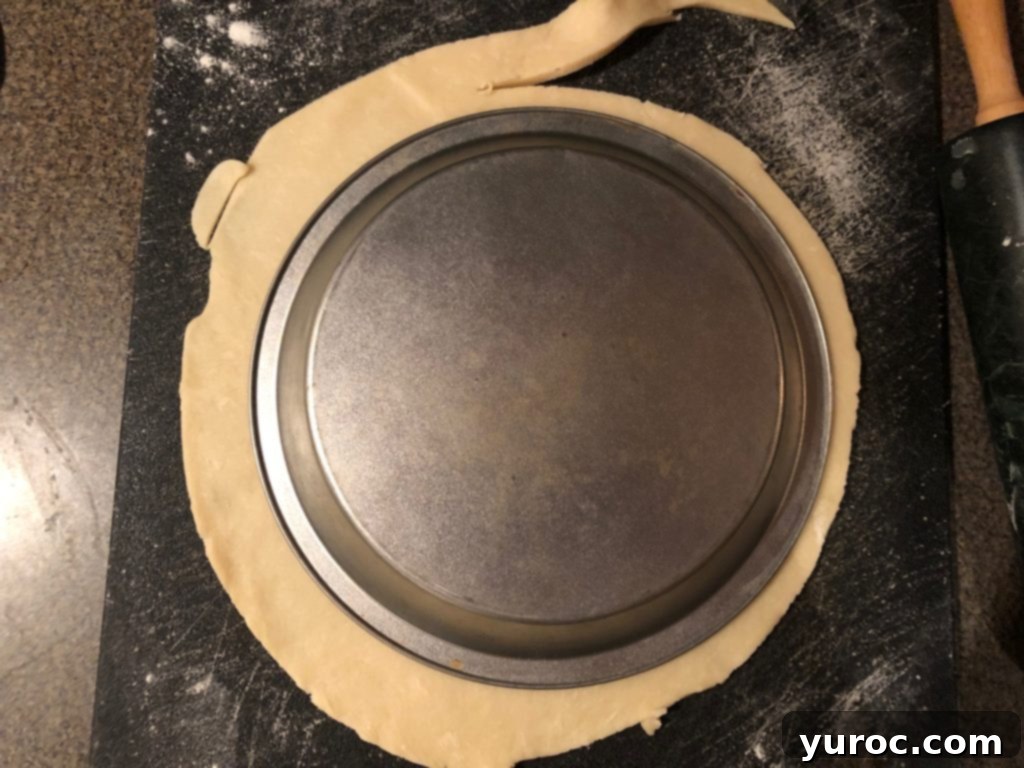
Using the upside-down pie plate or tart mold as a guide, cut out a circular shape from your rolled dough. Ensure you leave a generous margin of at least one to two inches beyond the edge of the pan. This extra dough will provide ample material for crimping and trimming later, once the crust is securely placed within the pie plate.

Lightly spray your pie plate with a non-stick cooking spray. Carefully pick up your rolled-out crust – some prefer to gently drape it over a rolling pin for transfer (as demonstrated in the video linked below), but I personally find it easier to simply lift and place it by hand. Center the dough in the pie plate, allowing it to gently settle into the contours without stretching. This will form your sturdy bottom crust. *Refer to our “Expert Tips” section for guidance on easily repairing any small rips or tears that might occur during transfer.
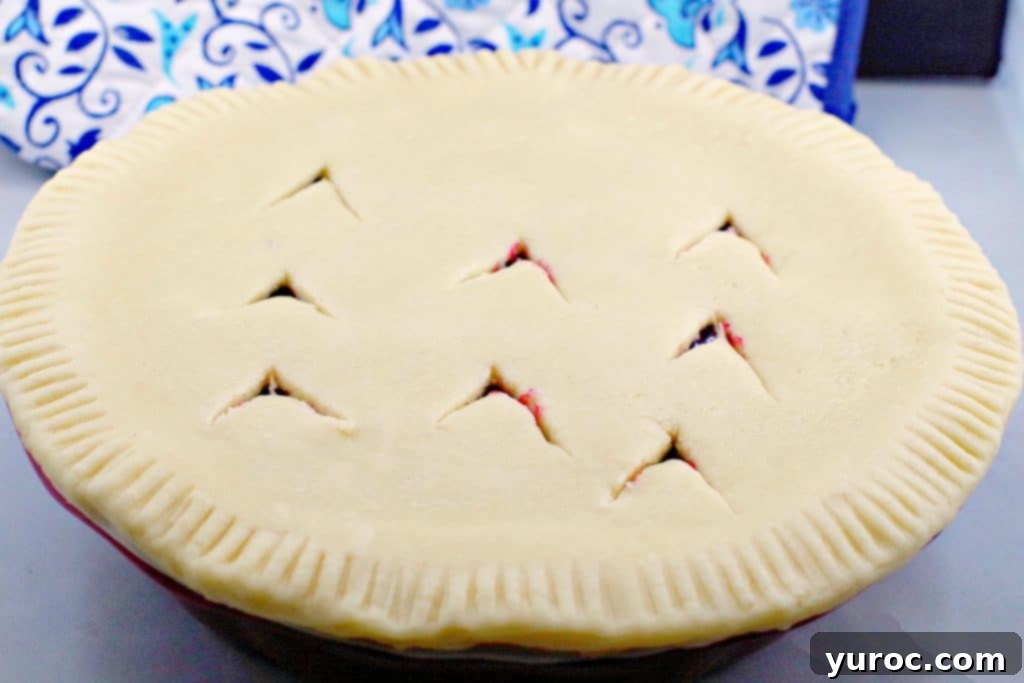
If you’re making a double-crust pie, you will trim the dough once the filling is in place and the second pie crust (your top crust) has been added. Trim the excess dough, leaving about a 1/2 to 1 inch overhang. Then, use a fork to press the top and bottom crusts together around the edges, creating a simple yet elegant crimped finish (see the video in our “Videos” section on how to crimp with a fork). Feel free to trim a little more if needed after crimping to achieve a neat edge. I highly recommend using kitchen shears for trimming at this stage, as they offer superior control compared to a knife. Finally, create a few venting slits on your top crust by cutting small triangles or decorative shapes with a paring knife. This allows steam to escape during baking, preventing a soggy crust and ensuring even cooking.
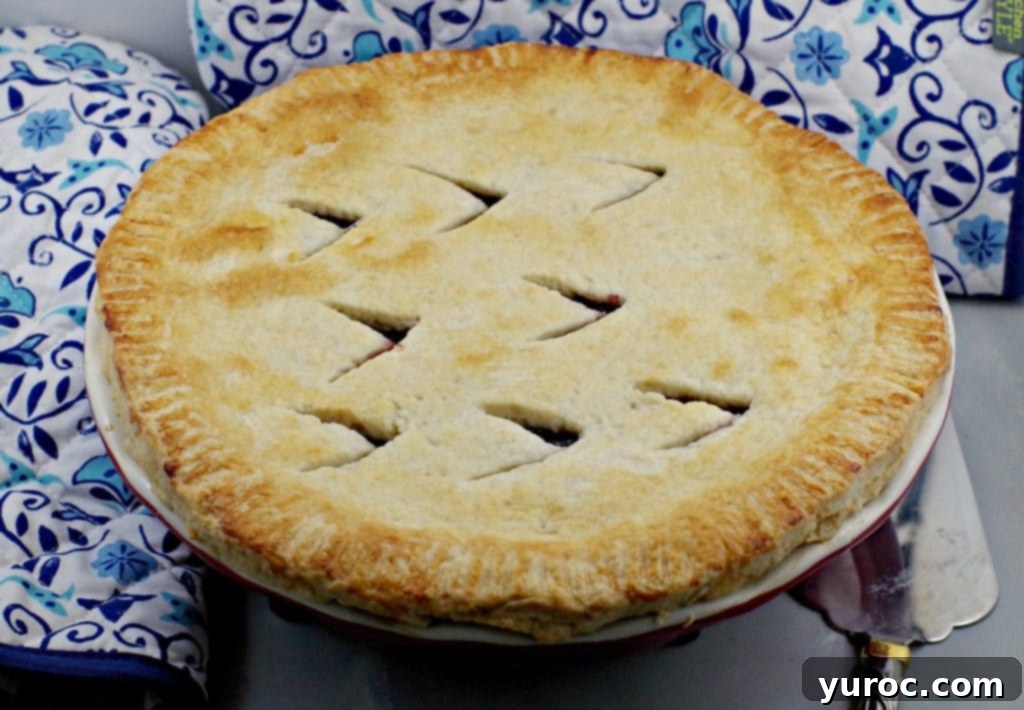
Bake your pie according to the specific instructions provided by your pie filling recipe. Typically, most pies require approximately 30-40 minutes of baking time, often starting with an initial 10-minute bake at a higher temperature of 400 degrees F (204 degrees C), followed by the remaining time at a reduced temperature of 350 degrees F (176 degrees C) until the crust is beautifully golden brown and the filling is set. If you are baking smaller tart shells, the baking time will be significantly shorter, usually about half the time.
💡 Expert Baking Tips for Your No-Fail Pie Crust
Achieving pie crust perfection is within your reach with these helpful insights:
- **Easy Tear Repair:** Don’t panic if your dough tears a little while transferring or handling! Once it’s in the pan, simply push the torn edges gently back together. Then, dip the tip of your index finger in a little warm water and gently rub it over the tear. The water acts as a natural glue, seamlessly bonding the dough back together. You can use this simple repair method as often as needed to ensure a perfect crust.
- **Blind Baking Perfection:** If your recipe calls for blind baking the crust (pre-baking it before adding the filling), I highly recommend using pie weights (affiliate link). These small ceramic or metal weights prevent the crust from puffing up and shrinking, ensuring a beautifully flat and even bottom crust for your filling. Simply line the dough with parchment paper before filling with weights.
- **Avoid Overworking:** While this is a forgiving recipe, remember that overworking the dough can still develop too much gluten, potentially leading to a tougher crust. Mix only until just combined and handle gently.
🎥 Helpful Video Tutorials
To further assist you in mastering your pie crust, here are two useful video tutorials:
If you desire a simple, yet elegant technique for finishing your pie crust edges, this video demonstrates how to crimp a pie crust beautifully with just a fork:
VIDEO: How to crimp a pie crust with a fork
For those who prefer a different method of transferring delicate pie dough, this video shows you how to move pie dough to a pie plate using a rolling pin:
VIDEO: How to move pie dough to a pie plate with a rolling pin
👪 Yield and Versatility: Understanding Serving Size
Known affectionately as the “Never Fail Pie Crust,” this recipe is not only incredibly easy but also wonderfully versatile. It yields enough dough for approximately **5 single pie crusts**, making it ideal for various baking needs. You can effortlessly create a beautiful single-crust pie, a hearty double-crust pie, or numerous delicate single or double tart shells. While you might not require all the dough at once, the excellent news is that it freezes exceptionally well, allowing you to prepare ahead and have a homemade crust ready whenever the craving strikes!
🌡️ Storage Instructions for Future Baking
Proper storage ensures you always have this fantastic pie crust ready for your next baking adventure. Due to the raw egg content, you can safely store this dough in the refrigerator for up to 1 day. For longer storage, this pie crust freezes beautifully for up to 3 months. To freeze, form the dough into a ball or a flat disk, wrap it tightly in plastic wrap, then place it inside a Ziploc freezer bag, pressing out as much air as possible before sealing. Label with the date and freeze for up to 3 months.
Alternatively, you can roll out the dough, press it into an aluminum pie plate, and then place the entire plate inside a large Ziploc freezer bag for freezing. This method allows for even quicker preparation later. When you’re ready to use your frozen dough, be sure to thaw it completely in the refrigerator before attempting to roll it out or handle it. Once thawed, proceed with the rolling and shaping directions as outlined in the recipe.

I feel incredibly fortunate to have had my Grandma in my life until she reached the wonderful age of 95. Her timeless “No Fail Pie Crust” recipe was a gift that truly kept on giving. Now, much like her, I too can confidently call myself a master pie maker. And when the day comes for me to pass this cherished recipe on to my future grandchildren, they will likely, just as I did, file it away at first. But one thing I know for sure is that, in time, they will come to appreciate this recipe for No Fail Pie Crust and realize it was one of the most invaluable and delicious gifts they ever received.
So, if you’ve ever yearned to create your own homemade pie crust, but felt a lack of confidence holding you back, I implore you to try this incredibly easy and reliable recipe. Trust me – you simply will not fail!
And if you find yourself with any delicious leftover pastry, don’t let it go to waste! Consider whipping up my incredible Butter Tart Ice Cream recipe for another delightful treat!
Discover More Delicious Pie and Tart Recipes:
- Rhubarb Sour Cream Pie (with Crunchy Topping)
- Best Butter Tart Recipe
- Sweet Potato Pie with Marshmallows
- Raspberry Tiramisu Tarts
Did your family ❤️ this recipe? Did you know that commenting and ⭐ rating recipes is one of the best ways to support your favorite recipe creators? If you LOVED this recipe, please take a moment to comment and rate it in the recipe card below, or share your beautiful photos on social media using the hashtag #foodmeanderings or by tagging @foodmeanderings!
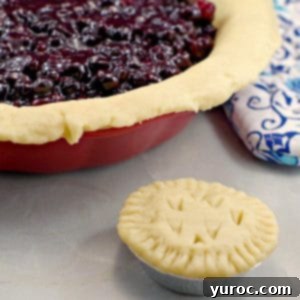

🥧 No-Fail Pie Crust Recipe (Perfect Cold Water Pastry)
Print Recipe
Pin
Save RecipeSave Recipe
Rate
Add to Shopping ListGo to Shopping List
Ingredients
- 5 cups all-purpose flour
- 1 teaspoon baking powder
- ½ teaspoon salt
- 2 tablespoons brown sugar
- 1 lb cold shortening (2.21 cups) * Brands like Crisco or Tenderflake work wonderfully, or substitute with cold lard for a traditional flavor.
- 2 tablespoons white vinegar
- 1 large egg
- ¾ cup very cold water
Instructions
-
In a large mixing bowl, combine the all-purpose flour, baking powder, salt, and brown sugar. Whisk thoroughly. Add the cold shortening and cut it into the dry ingredients using a pastry cutter or your fingertips until the mixture resembles coarse crumbs with some pea-sized pieces of fat remaining. Mix well but gently.
-
In a separate small bowl, beat together the vinegar, egg, and very cold water until combined.
-
Pour the wet mixture into the dry flour mixture. Mix carefully until the dough just starts to come together and forms small, cohesive balls. Avoid overmixing.
-
Continue mixing until you can form the dough into a single large ball. Don’t be afraid to use your hands to bring it together, but avoid excessive kneading. If the dough feels sticky or gooey, add only 1 tablespoon of flour at a time until it’s more manageable. The dough should be soft and pliable, not too dry or too wet, to ensure it rolls out properly. Be careful not to use too much flour!
-
Lightly flour your work surface and rolling pin. Roll the dough out to approximately ¼ inch thick. For a pie, place your pie plate upside down on the dough to check if it’s large enough. For tarts, use aluminum tart plates as your guide.
-
Cut a circle around your pie plate or tart mold, ensuring you leave an extra inch or two of dough beyond the edges. This extra space is for later trimming and crimping once the crust is in the pan.
-
Spray your pie plate with non-stick cooking spray. Gently pick up the rolled-out crust and carefully place it into the pie plate, easing it into the corners without stretching. This forms your bottom crust. (Some prefer to drape it over a rolling pin for transfer, as shown in the video in the main post, but direct placement works well too). *See the “Expert Tips” section for guidance on repairing any small rips or tears.
-
If making a double-crust pie, trim the dough once the filling is in and the top crust has been placed. Leave about a 1/2 to 1 inch overhang. Use a fork to press the top and bottom crusts together to crimp the edges (refer to the video in the main post on how to crimp a pie crust with a fork). Trim any additional excess dough. For precision, kitchen shears are recommended for trimming at this stage. Finally, cut small triangles or slits into the top crust with a paring knife to create vents, allowing steam to escape during baking.
-
Bake your pie according to the instructions provided by your specific pie filling recipe. Most pies typically require 30-40 minutes of baking, often starting with 10 minutes at 400 degrees F (204 degrees C) and then reducing the temperature to 350 degrees F (176 degrees C) for the remainder of the time, until the crust is golden brown. If you are baking smaller tarts, the baking time will be approximately half that of a full pie.
